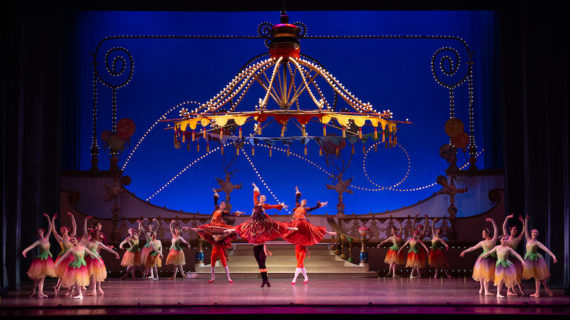
Seneca Valley’s creatively designed Ehrman Crest school named one of Time’s Best Inventions of 2022
All photos of Ehrman Crest courtesy of Laura Peters/CannonDesign.
Seneca Valley School District devoted several years to designing Ehrman Crest Elementary and Middle School. In fact, the collaborative planning process to imagine this unique building, which involved not just school administration but also teachers, students and advisors from the Children’s Museum of Pittsburgh, took “probably triple the amount of time it took to build it,” says district superintendent Tracy Vitale.
But with the school now open for the 2022-2023 school year, it’s clear that the result — a remarkable building with learning opportunities literally built into every aspect of the space — was well worth that wait. Teachers and students are excited to be spending their days there.
And the building is garnering national attention. On Nov. 10, Ehrman Crest was named among Time magazine’s Best Inventions of 2022.

“Ehrman Crest Elementary/Middle School near Pittsburgh aims to show how physical spaces can impact educational outcomes,” Time wrote about the project. “The $63 million K-6 school, which opened in August, features harmonic walls that educate about sound, fractions, and energy; graphic walls with animals and numbers; and magnetic walls that let kids study local ecology. If it sounds like a children’s museum, it is: Cannon-Design and the Children’s Museum of Pittsburgh partnered on the project. With security features like an art wing that doubles as a storm shelter, Ehrman Crest models the future of educational institutions.”

Vitale says the district is glad to get this acknowledgment, but their goal was simply to create a place where every aspect of the building aids in learning.
“We’re very humbled by the designation. We certainly did not set out to design a building that would receive such recognition,” she says. And yet as the teams from Seneca Valley and from the Children’s Museum worked with architects from CannonDesign, they knew it was vital to go beyond the traditional ways that schools have been designed for the last century.
“We didn’t want an institution,” Vitale says. “We wanted the building to be a teaching tool itself, just like when you walk into a children’s museum.”

One powerful way to do that: Bring all voices to the table.
“We were very cognizant of involving so many stakeholders, especially the children and the teachers who are going to live in that space,” Vitale says.
The district administration was directly involved in the planning, but they made sure to work directly with teachers, parents and students — even the youngest ones.
“CannonDesign, our architects, led many stakeholder groups with children saying, ‘What would you like to see in a brand new school?,'” Vitale says.
The young students would draw their ideas, talk about what they wanted to see and even build tabletop models to express their ideas. Older students were involved from the very beginning, as well.
“We had high school students who are interested in architecture, construction and engineering sitting at a table with our engineers — along with our little ones — with the high school students saying, ‘I went through the old building, and this is what I’d like to see in the new building,'” Vitale says. “That was pretty powerful.”
Among the creative ideas that surfaced: The huge oval ramp that transports students between floors offers views of the outdoors and opportunities for exercise, as well as illustrations of the principles of geometry. Huge magnetic maps on the walls give kids a tactile sense of where they are within Butler county, within Pennsylvania, within the U.S. and within the wider world. Every room and hallway has views of the outdoors. And each floor has open collaborative spaces where teachers can bring students out of their classrooms throughout the day.
“Too often when we’re in the ‘kid business,'” Vitale says, “we forget to ask the kids. We think as adults, we know best because we were kids. But we haven’t been kids today. And I think that’s really important for us to pause and listen to what they have to say.”
That listening, and the collective, creative process that went into designing this new building, is fueling a culture of curiosity and collaborative discovery that will hopefully make elementary and middle school a remarkable experience for kids in Seneca Valley.
“You can build an amazing building. But really, the learning occurs because of the culture of the building,” Vitale says. At Ehrman Crest, “just like when you walk into a children’s museum, everywhere you turn, there’s something to learn.”













